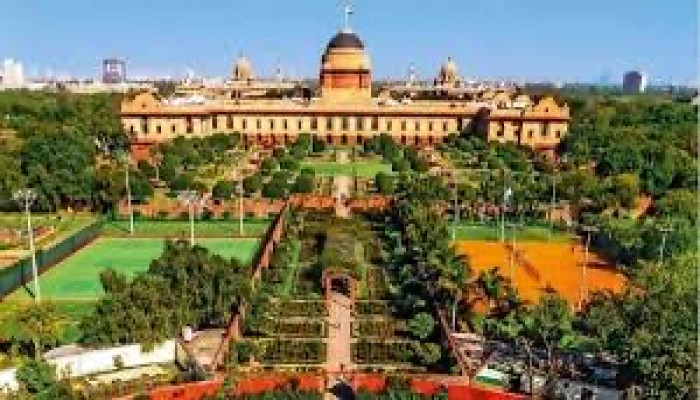Mughal Gardens at Rashtrapati Bhavan renamed as 'Amrit Udyan', to open for visitors from Jan 31
- In Reports
- 07:19 PM, Jan 28, 2023
- Myind Staff
The famous Mughal Gardens in Rashtrapati Bhavan will now be known as ‘Amrit Udyan’. On the occasion of the celebrations of 75 years of Independence as ‘Azadi ka Amrit Mahotsav’, President Droupadi Murmu has given a common name to the Rashtrapati Bhavan gardens as ‘Amrit Udyan’.
The decision is yet another move to shed India’s colonial baggage after Rajpath was renamed as ‘Kartavya Path’.
Rashtrapati Bhavan is home to a rich variety of gardens. Originally, they included East Lawn, Central Lawn, Long Garden and Circular Garden. During the term of former Presidents Dr. A.P.J. Abdul Kalam and Shri Ram Nath Kovind, more gardens were developed, namely, Herbal-I, Herbal-II, Tactile Garden, Bonsai Garden and Aarogya Vanam.
“Rashtrapati Bhavan gardens will now be collectively known as ‘Amrit Udyan’. The gardens are being opened by the President from tomorrow. It will remain open for the public from January 31 to March 26," said Navika Gupta, Deputy Press Secretary to President.
The garden boasts of growing 159 celebrated varieties of roses which blossom primarily in the month of February and March. They include Adora, Mrinalini, Taj Mahal, Eiffel Tower, Modern Art, Sentimental, Oklahoma (also called black rose), Belami, Black Lady, Paradise, Blue Moon and Lady X. It also includes roses named after people of national and international fame such as Mother Teresa, Raja Ram Mohan Roy, Lincoln, John F Kennedy, Jawahar, Queen Elizabeth, and Christian Dior amongst others. Arjun and Bhim from the Mahabharata, also find a place in the presidential palace, according to Rashtrapati Bhavan.
Apart from roses, tulips, Asiatic lilies, daffodils, hyacinths and over seventy varieties of seasonal flowers including exotic bulbous and winter flowering plants make the gardens look beautiful. 60 of the 101 known types of bougainvilleas are found here. Edging and flowering of flower beds are done with alyssum, daisy, pansy etc. The grass that covers the garden is the doob grass, which was originally brought from Calcutta (now Kolkata) when the Mughal Gardens were being planted. The Garden has almost 50 varieties of trees, shrubs and vines including Moulsiri tree, Golden Rain tree, flower-bearing Torch Tree and many more. At present, over three hundred permanent and casual employees are deployed for the development and maintenance of the gardens of Rashtrapati Bhavan.
Image Courtesy: The mint







Comments